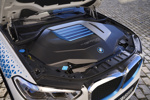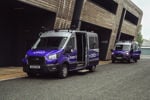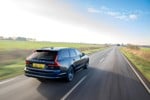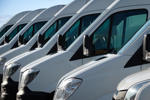Fleet decision-makers are set to play a pivotal role in the development of driverless technologies, according to the transport minister.
Highlighting the industry’s willingness to innovate, Robert Goodwill is predicting fleets will lead the way “once again”.
“We are entering a genuinely new era for motoring,” said Goodwill, “one that will be every bit as revolutionary as Henry Ford’s Model T or Karl Benz’s Motorwagen.
“It will be revolutionary because, for the first time, vehicles and roads will be designed to work together.
“Connected infrastructure, autonomous cars, vehicle-to-vehicle communications, and smart logistics will combine to transform road travel.”
However, if the Government is to achieve its aim of becoming a global leader in the development of autonomous technologies, early adoption will be crucial.
Goodwill suggests that logistics operators, car clubs and leasing companies are likely to help drive the early market, but it will be organisations operating company cars and vans that will deliver widespread use of the technology.
“Leading the way will be fleets,” he said, “just as they lead the way in many vehicle innovations.”
However, fleets face a steep learning curve, with driverless technologies rapidly developing. New research commissioned by the Society of Motor Manufacturers and Traders (SMMT) says motorway self-driving features will be available on vehicles in 2017, with full autonomy expected from 2025.
And, if emerging technologies are to gain traction in the market, early incentives will be crucial to take-up – something Goodwill says carmakers can help deliver.
He is calling on manufacturers to make driverless technologies, like advanced cruise control, automatic parking, telematics and lane recognition systems available on all new cars, while also making autonomous emergency braking (AEB) a standard fitment.
“In the case of automatic emergency braking, insurers tell me they can only take this into account if it is a standard feature, not an optional extra,” said Goodwill.
“The sooner this is standard across the range, the sooner improved safety will be reflected in insurance premiums.”
The transport minister was speaking at ‘SMMTConnected’ – a SMMT conference on connected and autonomous cars held in London, last week.
It provided the backdrop for the launch of a SMMT-commissioned report on the economic opportunities offered by connected and autonomous vehicles.
The research, conducted by KPMG, suggests that the development of connected and autonomous vehicles will help generate 320,000 jobs in the UK (fleetnews.co.uk, March 26, 2015).
It also says that the new vehicles will deliver a £51 billion boost to the UK economy and reduce serious road traffic accidents by more than 25,000 a year by 2030.
John Leech, head of automotive at KPMG and the report’s author, said: “Connected and autonomous vehicles will promote social inclusion, reduce pollution and save lives. This represents an important opportunity for the economy, but one that requires continued focus and commitment from Government and business.”
The Government has approved the testing of autonomous vehicles on public roads in Bristol, Coventry, Milton Keynes and Greenwich, as part of a £19 million programme.
But it has also been criticised by MPs for lacking a comprehensive strategy to take advantage of new emerging technologies such as driverless cars. The transport committee said it must do more to ensure that people and businesses benefit from this opportunity.
Asked if the committee was right, Goodwill told Fleet News: “I think to some extent they probably were, that’s why we’re getting our act into gear. We want to be at the cutting edge of this technology and the chancellor has put his money where his mouth is.”
The chancellor announced in the budget funding of £100m towards the development of driverless car technology.
David Raistrick, UK automotive leader at Deloitte, said: “Whilst £100m is not significant in terms of the overall level of investment required, it is nonetheless a valuable step in the right direction.



















Login to comment
Comments
No comments have been made yet.